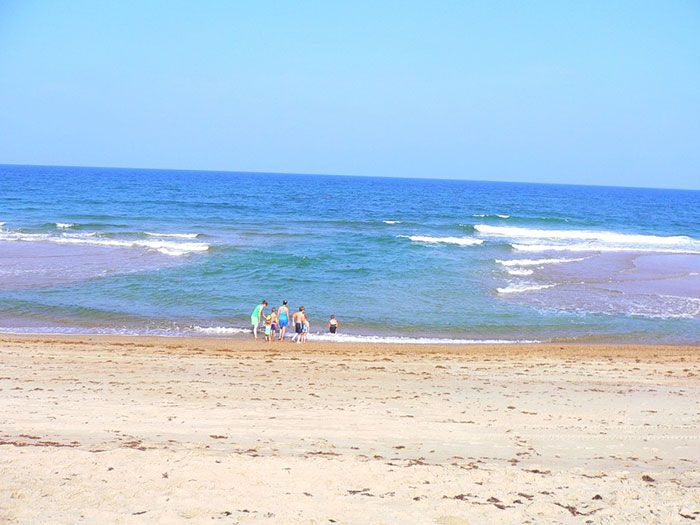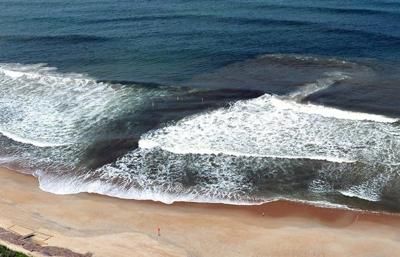Riptides on the beach in North Carolina
There’s nothing better than summer at the beach! However, it’s always important to stay safe in and around the water in North Carolina, and one of the most frequent natural occurrences that causes trouble in the ocean are rip currents, also referred to as rip tides.
Having the knowledge you need to keep you and others safe can go far in preventing an ocean emergency. Brush up on your facts and get the information required to stay safe on our beautiful North Carolina beaches.

What is a rip current?
A rip current is a channel of water that flows out perpendicular from the beach. This water moves quickly and can carry a person 30 to 100 feet or more out into the ocean.
When waves travel to the shore, they generate currents at their breaking point. They also bring water across sandbars, making the area near the shore deeper than it is on the other side of the sandbar. As the water flows back out to sea, it will find the easiest route to the ocean, which means the lowest point in the sandbar allows for the greatest amount of water to move through at once. This is how a rip current forms, and they are capable of moving as fast as eight feet per second. (For reference, that’s faster than an Olympic swimmer moves!)
Where do rip currents occur?
This natural phenomenon can occur anywhere there are waves. We know… That means everywhere along the beaches of NC has the potential to be affected by rip currents. However, you will find them more commonly along piers, jetties, or sandbars.
How can I spot a rip current?
One of the easiest ways to tell if there is a rip current near you is to look for gaps between waves. While this area may look calm and inviting, if it’s a small area of calm water in an otherwise wave-filled ocean, it’s probably a rip current.
You can also be on the lookout for muddy, brown-looking water. As the rip current moves out to sea, it will bring sand out with it. This churning up of the ocean floor is a clear indicator of the presence of a rip current.

How to escape a rip current
It is important to know how to escape a rip current. If you find yourself caught in a rip current, do not panic. While it may seem scary, the rip current will end when it reaches the other side of the sandbar or the end of a pier. Swim parallel to the shore to move out of the current, and then make your way back to the beach. If you need assistance, float on your back and signal to beachgoers and lifeguards. Above all else, do not try to swim directly back to shore.
Stay safe from riptides on NC beaches
As a real estate agent on the crystal coast of NC, we know that a little bit of precaution will make for an enjoyable and safe time at our beautiful NC beaches. You can always check beach conditions before heading out, and be sure to locate your nearest lifeguard in case you need assistance.
A day on the beach in North Carolina is one of the best ways we can think of to spend your time. Stay safe and enjoy your time with friends and family - after all, this is where you make memories that will last a lifetime!
Contact Us
Get In Touch With Us
- 252-515-0552
- bradberrygarner@gmail.com
- 5113-A Hwy. 70 Morehead City, NC 28557




